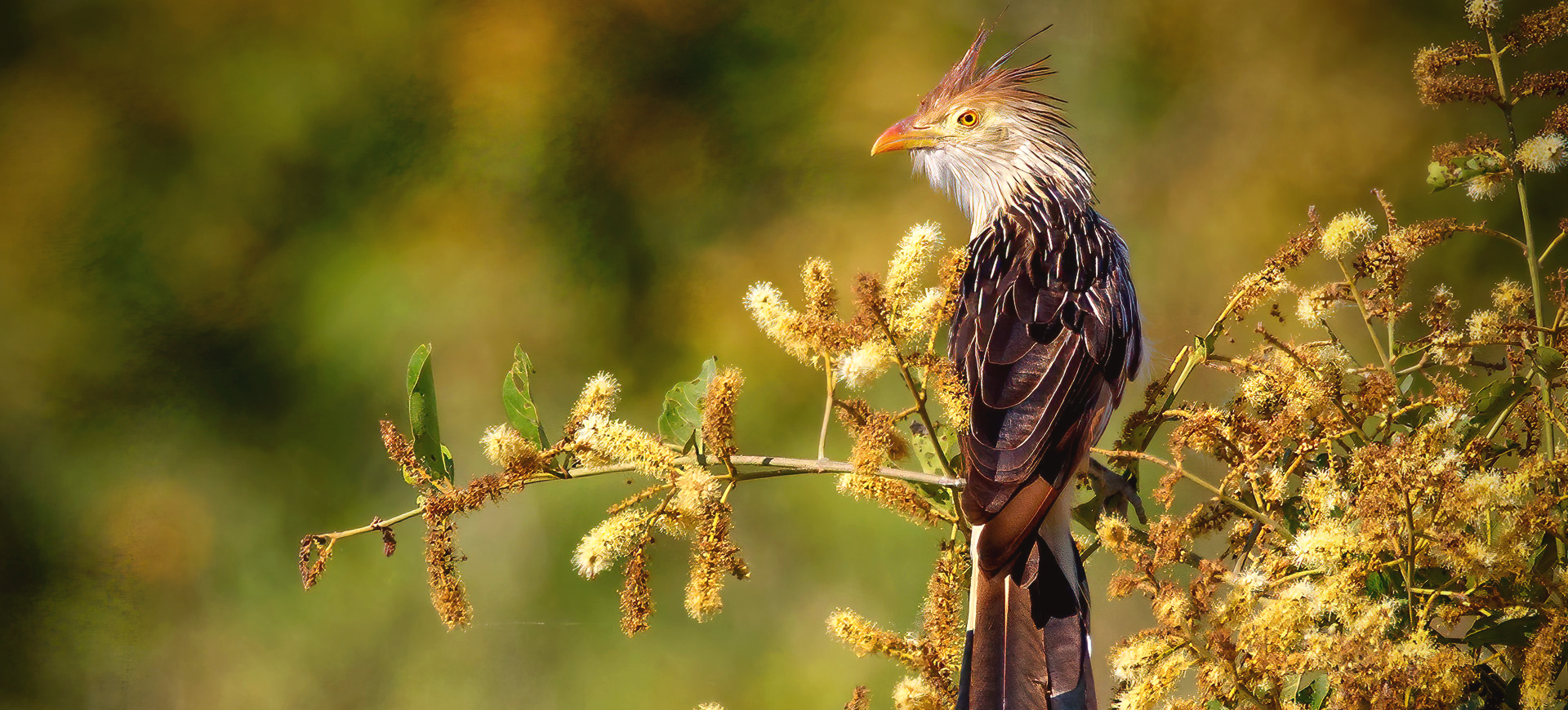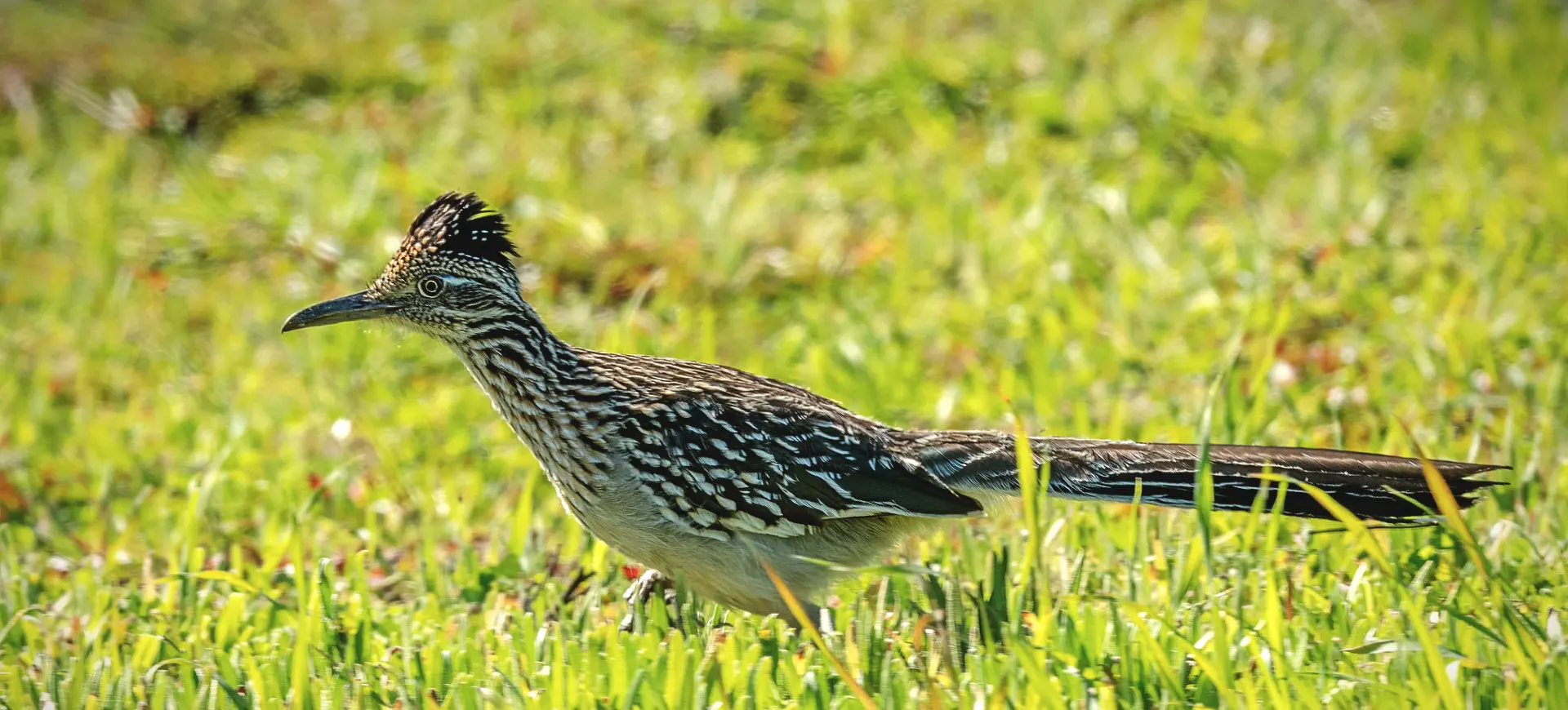Overview
The Crested Coua, scientifically named Coua cristata, is a strikingly beautiful bird endemic to Madagascar. It is known for its vivid plumage, characterized by a mixture of blues, greens, and browns, and a unique, crest-like structure on its head. This species is a member of the cuckoo family but, unlike many of its relatives, does not engage in brood parasitism, meaning it raises its own young. The Crested Coua inhabits several types of forest environments across Madagascar, showcasing a remarkable adaptability to different ecosystems.
The bird’s diet mainly consists of insects, small vertebrates, seeds, and various fruits, making it an omnivore. It is especially adept at hunting insects and small animals, using its acute vision and quick reflexes. Crested Couas are diurnal birds active during the day and can often be seen foraging on the ground or in the lower canopy of the forests. The vibrant colors of the Crested Coua, along with its crest and long tail, make it a visually striking species.
Breeding behavior in Crested Couas is notable for its complexity. These birds are monogamous, with pairs forming strong bonds. The male performs an elaborate courtship display to attract a female, including vocalizations and physical plumage displays. Nest building is a joint effort; both parents participate in incubating the eggs and feeding the chicks.
Taxonomy
Kingdom
Phylum
Class
Order
Family
Genus
Species
Sub Species
Type
Physical Description:
The Crested Coua is a medium-sized bird, measuring approximately 18 to 20 inches (45 to 50 cm) in length. Its most distinctive feature is the crest on its head, which can rise and lower. The plumage is a beautiful mix of blue, green, and brown hues, with a unique blue bare skin around the eyes. The tail is long and expressive, often used in communication and during courtship displays.
Males and females are similar in appearance, but males tend to have slightly more vibrant colors. The bird’s beak is stout and slightly curved, adapted for a varied diet. Juvenile Crested Couas have duller plumage and lack the prominent crest of adults. The bird’s overall appearance is a striking combination of color and form, making it one of the most visually appealing species in Madagascar.

Lifespan: Wild: ~10 years || Captivity: ~15 years

Weight: Male: 5.3-6.7 oz (150-190 g) || Female: 5.3-6.7 oz (150-190 g)

Length: Male & Female: 18-20 inches (45-50 cm)

Wingspan: Male & Female: 12-15 inches (30-38 cm)
Characteristic:
Native Habitat:
Crested Couas are native to Madagascar, where they inhabit a range of forest types, including dry deciduous forests, spiny forests, and secondary forests. They are well-adapted to live in dense forest canopies and more open woodland areas. The diversity of habitats they occupy reflects their adaptability and versatile feeding habits.
These birds are also found in cultivated areas and gardens, where they can forage for fruits and insects. Their presence in various habitats highlights their ability to coexist with human-altered landscapes, provided sufficient vegetation cover and food sources are available.
Climate Zones:
Biomes:
Biogeographical Realms:
Continents:
Countries:
Diet:
Diet & Feeding Habits:
Crested Couas are omnivorous, feeding on various insects, fruits, seeds, and small vertebrates. Their diet adapts to the availability of food sources in their environment. They are skilled hunters, catching insects and small animals with precision. The bird’s strong beak is also well-suited for breaking open fruits and seeds.
Crested Couas play an important role in seed dispersal in the wild through their fruit-eating habits. Their foraging behavior contributes to the ecological balance of their habitats. In captivity, their diet is supplemented with various fruits, vegetables, and proteins to mimic their natural diet as closely as possible.
Mating Behavior:
Mating Description:
Crested Couas are monogamous, forming pairs that may last for several breeding seasons. The mating process involves elaborate courtship rituals, where the male displays his vibrant plumage and performs specific calls to attract a female. Physical gestures like wing flapping and crest raising often accompany these displays.
Once a pair is formed, both the male and female participate in building a nest, usually in a tree or bush. The nest is made of twigs and leaves and is relatively shallow. The female lays one to two eggs, and both parents are responsible for incubating and feeding the chicks. The cooperative nature of their breeding behavior helps ensure the survival and health of the offspring.
Reproduction Season:
Birth Type:
Pregnancy Duration:
Female Name:
Male Name:
Baby Name:
Social Structure Description:
Crested Couas are generally solitary or found in pairs, especially during the breeding season. Outside breeding, they may gather in small groups, particularly foraging in areas with abundant food sources. Their social interactions are less complex than those of other bird species, focusing on pair bonding and territorial behavior.
The communication between Crested Couas involves a variety of vocalizations and physical displays. These birds use calls to maintain contact with their mate, signal alarm, and defend their territory. The visual display of their crest and tail also plays a role in communication, especially during courtship.
Groups:
Conservation Status:
Population Trend:
The Crested Coua is currently not considered at risk of extinction and holds a stable population status. However, ongoing habitat destruction and fragmentation threaten their long-term survival. The species continues to thrive in areas where natural forests have been preserved or minimally altered. Conservation efforts in Madagascar, focusing on protecting forest habitats, indirectly benefit the Crested Coua. Monitoring their populations in various habitats is essential to promptly detect future declines.
The adaptability of Crested Couas to varying habitats has been a key factor in their stable population status. They can live near human settlements as long as they can access sufficient food and nesting sites. This adaptability may help buffer the species against some impacts of habitat change, though it does not make them immune to large-scale deforestation.
Population Threats:
The primary threat to the Crested Coua is habitat loss due to deforestation, a common issue in Madagascar. Deforestation for agriculture, logging, and development reduces the natural habitats available for these birds. This loss of habitat not only decreases the available nesting areas but also reduces food sources.
Another threat is the potential for hunting and trapping, although this is less of a concern for the Crested Coua than some other Malagasy species. The bird’s adaptability to various habitats has helped it withstand these threats to some extent, but ongoing habitat destruction remains a significant concern.
Conservation Efforts:
Conservation efforts for the Crested Coua are largely focused on habitat preservation. Protecting and restoring Madagascar’s forests is crucial for the survival of this species and the island’s unique biodiversity. Environmental organizations and the Malagasy government are involved in various conservation projects, including establishing protected areas and sustainable forest management practices.
Community-based conservation initiatives are also important, involving local communities in protecting their natural resources. These initiatives often include education and outreach programs to raise awareness about the importance of forest conservation and the unique wildlife of Madagascar, including the Crested Coua.
Additional Resources:
Fun Facts
- The Crested Coua’s vibrant eye coloration is one of its most distinctive features, adding to its overall exotic appearance.
- They are known for their remarkable ability to mimic the sounds of other animals and birds.
- Crested Couas do not practice brood parasitism, unlike many cuckoo species, making them unique within their family.
- The Crested Coua’s tail is about half of its total body length.
- Their nests are often built at a relatively low height, making them accessible for observation.
- These birds have a unique way of feeding their chicks, presenting the food in their beak and performing a bobbing motion.
- Crested Couas are proficient at moving through dense foliage, using their long tails for balance.
- They have a special adaptation in their feathers, with a portion of the feather shaft being bare, which is thought to aid in sensory perception.
- The species is known for its resilience in habitat changes, though it remains dependent on forested environments.
- Crested Couas are part of the cultural folklore of Madagascar and are sometimes considered omens of good luck.






